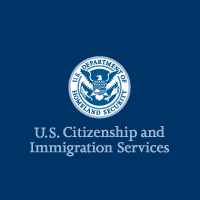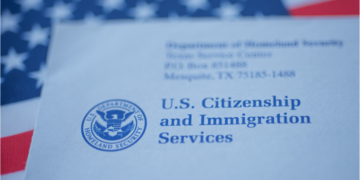[ad_1]
Keep updated on US Immigration coverage. Try USCIS’s new article “USCIS Will increase Computerized Extension Interval of Work Permits for Sure Candidates”. Please be at liberty to contact us if you wish to be taught extra and/or need assistance. You may contact our crew at data@watsonimmigrationlaw.com or by telephone at (206) 292-5237.
WASHINGTON—U.S. Citizenship and Immigration Providers (USCIS) introduced a Short-term Remaining Rule (TFR) that will increase the automated extension interval for employment authorization and Employment Authorization Paperwork (EADs), accessible to sure EAD renewal candidates, to as much as 540 days. The rise, which shall be efficient instantly on Could 4, 2022, will assist keep away from gaps in employment for noncitizens with pending EAD renewal purposes and stabilize the continuity of operations for U.S. employers.
“As USCIS works to handle pending EAD caseloads, the company has decided that the present 180-day automated extension for employment authorization is presently inadequate,” stated USCIS Director Ur M. Jaddou. “This short-term rule will present these noncitizens in any other case eligible for the automated extension a possibility to take care of employment and supply crucial assist for his or her households, whereas avoiding additional disruption for U.S. employers.”
For a number of years, USCIS has been in a precarious monetary scenario that has impaired the environment friendly completion of caseloads. The COVID-19 pandemic exacerbated these challenges in 2020, along with a hiring freeze and furlough risk resulting in workforce attrition and severely decreased capability. In 2021, earlier than USCIS may get well from these fiscal and operational impacts, there was a sudden and dramatic enhance in EAD preliminary and renewal filings, as defined intimately within the TFR.
The TFR, which solely applies to these EAD classes presently eligible for an automated as much as 180-day extension, will briefly present as much as 360 days of extra automated extension time (for a complete of as much as 540 days) to eligible candidates with a timely-filed Kind I-765 renewal software pending in the course of the 18-month interval after publication of the TFR whereas USCIS continues to work by means of pending caseloads that had been exacerbated by the COVID-19 pandemic. This timeframe will permit USCIS a possibility to handle staffing shortages, implement extra efficiencies, and meet Director Jaddou’s just lately introduced purpose of reaching a three-month cycle time for EAD purposes (typically akin to a median three-month processing time) by the top of FY23. Starting Oct. 27, 2023, automated extensions of employment authorization and EAD validity will revert to the as much as 180-day interval for these eligible candidates who well timed file Kind I-765 renewal purposes.
Noncitizens with a pending EAD renewal software whose 180-day automated extension has lapsed and whose EAD has expired shall be granted a further interval of employment authorization and EAD validity, starting on Could 4, 2022 and lasting as much as 540 days from the expiration date of their EAD, such that they might resume employment if they’re nonetheless throughout the as much as 540-day automated extension interval and are in any other case eligible. Noncitizens with a pending renewal software nonetheless coated underneath the 180-day automated extension shall be granted a further as much as 360-day extension, for a complete of as much as 540 days previous the expiration of the present EAD. Noncitizens with a pending renewal software and legitimate EAD on Could 4, 2022, or who well timed file an EAD renewal software earlier than Oct. 27, 2023, shall be granted an automated extension of as much as 540 days if their EAD expires earlier than the renewal software is processed.
The automated extension typically will finish upon notification of a remaining resolution on the renewal software or the top of the as much as 540-day interval (which means, as much as 540 days after the expiration date on the applicant’s facially expired EAD), whichever comes earlier.
Sure noncitizens who’re in the US could file a Kind I-765, Utility for Employment Authorization, with USCIS to request employment authorization and an EAD. Different noncitizens whose immigration standing authorizes them to work in the US with out restrictions may use Kind I-765 to use for an EAD that reveals such authorization.”
[ad_2]
Source link































